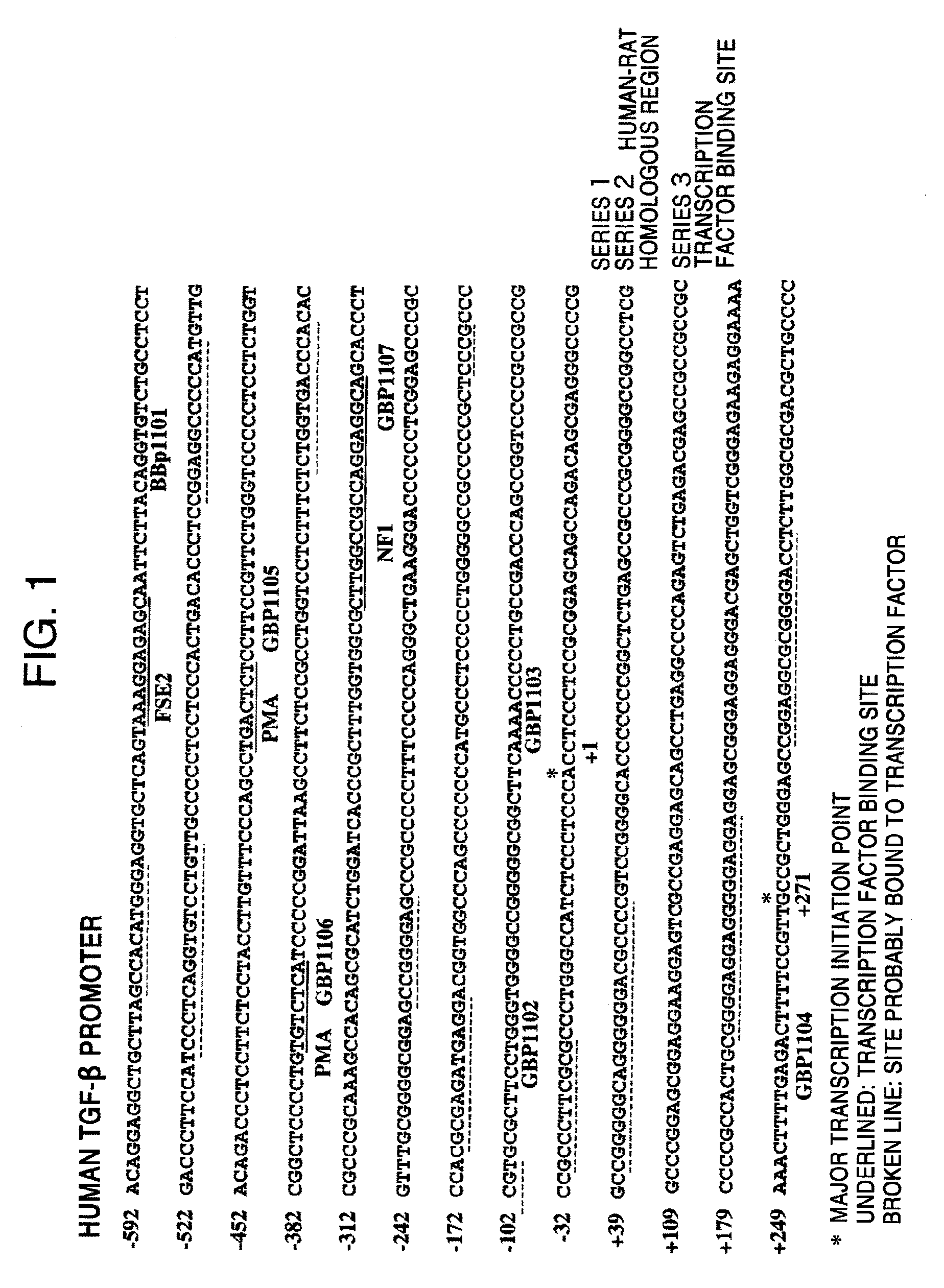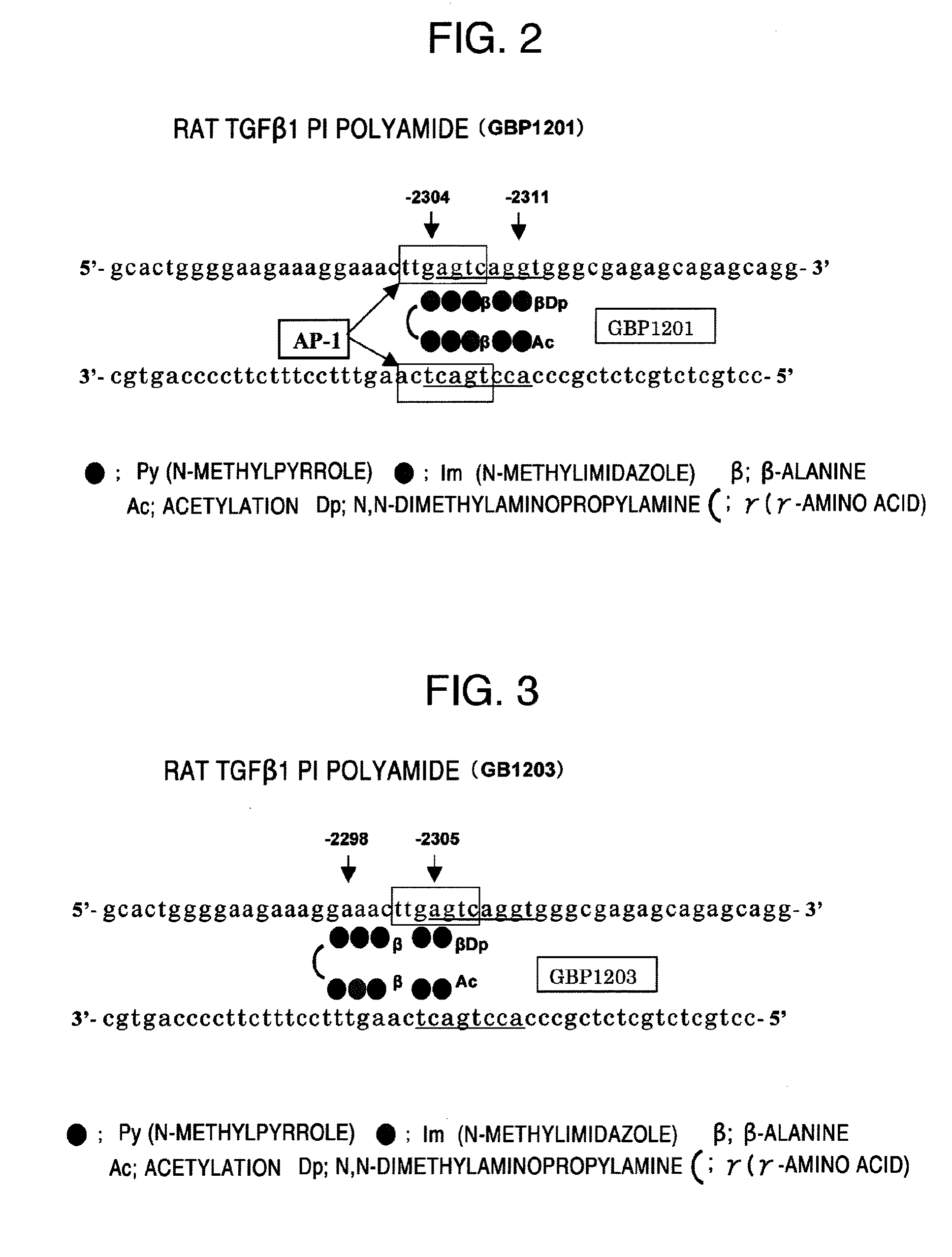Topical therapeutic agent for ophthalmic diseases comprising compound capable of binding specifically to DNA sequence
a technology of ophthalmic diseases and therapeutic agents, which is applied in the direction of drug compositions, peptide sources, peptide/protein ingredients, etc., can solve the problems of serious corneal clinical problems, poor prognosis, and serious permanent impairment of visual function
- Summary
- Abstract
- Description
- Claims
- Application Information
AI Technical Summary
Benefits of technology
Problems solved by technology
Method used
Image
Examples
examples
1. Synthesis of Py-Im Polyamides Corresponding to Promoters
(1) Designing of Py-Im Polyamides Corresponding to Transcription Regulatory Sites of Human and Rat Transforming Growth Factor β Genes and Human and Rat Matrix Metalloprotease 9 Genes
I. Materials and Methods
[0114]The above-mentioned PIP compounds according to the present invention were designed as Py-Im polyamides.
(2) Machine-Assisted Automated Synthesis of Py-Im Polyamide Using the Fmoc Method
[0115]Machine-assisted automated synthesis of a pyrrole-imidazole polyamide was performed using a sequential flow peptide synthesizer Pioneer (trade name) (Applied Biosystems) with 0.1 mmol scale (200 mg of Fmoc-β-alanine-CLEAR acid resin, 0.50 meq / g, Peptide Institute, Inc.). The automated solid phase synthesis consists of DMF wash, removal of a Fmoc group with 20% piperidine / DMF, methanol wash, coupling with a monomer for 60 minutes in the presence of HATU and DIEA (4 equivalents each), methanol wash, if necessary, protection with ace...
PUM
| Property | Measurement | Unit |
|---|---|---|
| flow rate | aaaaa | aaaaa |
| flow rate | aaaaa | aaaaa |
| temperature | aaaaa | aaaaa |
Abstract
Description
Claims
Application Information
 Login to View More
Login to View More - R&D
- Intellectual Property
- Life Sciences
- Materials
- Tech Scout
- Unparalleled Data Quality
- Higher Quality Content
- 60% Fewer Hallucinations
Browse by: Latest US Patents, China's latest patents, Technical Efficacy Thesaurus, Application Domain, Technology Topic, Popular Technical Reports.
© 2025 PatSnap. All rights reserved.Legal|Privacy policy|Modern Slavery Act Transparency Statement|Sitemap|About US| Contact US: help@patsnap.com



